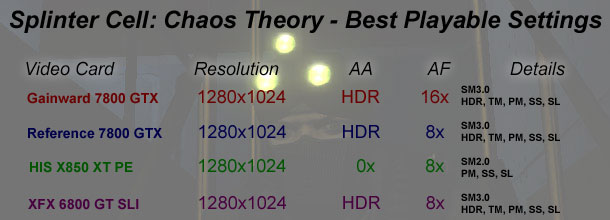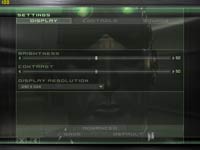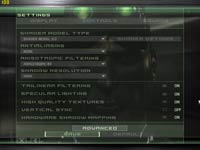Splinter Cell: Chaos Theory
Publisher: UbisoftWe are using the full version of Splinter Cell: Chaos Theory patched to version 1.04. It features a new game engine that has been created around a heavily modified Unreal Engine 2 - the game used to only have two shader profiles: Shader Model 1.1 and Shader Model 3.0. Meaning that all of ATI's current video cards default to Shader Model 1.1, and only the GeForce 6 series are capable of using the Shader Model 3.0 path.
However, the introduction of patch 1.04 bought a Shader Model 2.0 profile for ATI's current generation video cards. You can read more about the Shader Model 2.0 path here.
We configured both Anti-Aliasing and Anisotropic Filtering from within the game, and thus the driver control panel was left set to "Application Controlled".
Below is a table of the best-playable settings that we found best for each video card configuration. In this title, we found that 25 to 30 frames per second minimum and a target of 50 frames per second (or higher) for the average frame rate delivered a smooth and fluid gaming experience across the rest of the game.

The new Shader Model 2.0 path in Splinter Cell: Chaos Theory meant that the Radeon X850 XT PE's image quality was nearly on a par with NVIDIA's GeForce 6 and 7 series video cards. Check our article entitled 'Splinter Cell: Chaos Theory with SM2.0' for detailed image quality comparisons at the same detail settings. We found that the HIS Radeon X850 XT PE was best-playable at 1280x1024 0xAA 8xAF with Soft Shadows and Parallax Mapping turned on. Unfortunately, HDR came at too much expense, meaning that we had to drop the resolution to attain playable frame rates on the Radeon X850 XT PE with HDR turned on.
The XFX GeForce 6800 GT SLI was best-playable at 1280x1024 0xAA 8xAF with all details turned on - much like the reference GeForce 7800 GTX. The GeForce 6800 GT SLI actually delivered a slightly smoother frame rate than a single GTX, incidentally.

MSI MPG Velox 100R Chassis Review
October 14 2021 | 15:04








Want to comment? Please log in.